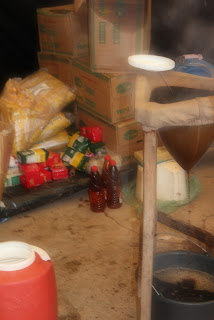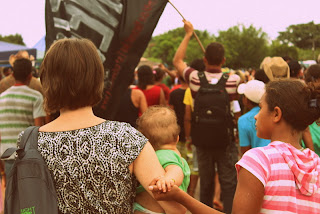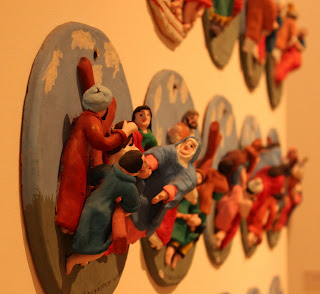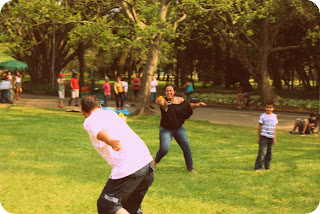The ten days between April 8th-17th 2012 were not a complete blur, because I diligently documented them through interviews, video clips, and field notes, but they were an incredibly hectic, yet rewarding set of experiences. It has taken four, ok now ten, days to recover to the point where I could write this post. So as they say in The Mighty Wind: “What happened?” (it sounds much funnier in the movie, I promise)
On April 8th, approximately 200 MST youth, ranging in ages from 12-30, and traveling from as far as 12 hours away, converged at a curve on a remote Brazilian highway known as the “S-curve” (Curva do S).
This place was chosen as the site for their annual 'pedagogical encampment' (more on this soon) because it is the location where the massacre of Eldorado dos Carajas occurred, which occurred in 1996 when 19 MST members were killed by paramilitary forces while encampment on the side of the highway.
That this area holds symbolic importance is obvious to even the passing tourist because of the monument, consisting of 19 massive burned Brazil nut trees interred in a circle, which the movement constructed following the massacre.
Beginning on April 8th, the MST youth transformed the space once again into one of informal and formal learning. Over the next 10 days, plenaries were held each day where members learned about pertinent topics such as gender relations, agrarian land tenure, agroecology, and critical cartography.
The event was a key part of my research on education within this social movement.
Plenary on rural education
Discussion group on the side of the highway
Discussion group with monument in background
Speaker on agrotoxics
The pen is mightier than the sword
It was also very tiring for a number of reasons. Jo, Annie, and I had arrived at the settlement, our home for the next year, just two days before the encampment started. As a result we were all just getting settled, pun not intended, when the encampment began. Additionally, while it was a very welcoming atmosphere, the encampment, which was located on the side of a rural highway wasn't necessarily the best locale for Jo and Annie to get acclimatized to Brazilian life. As a result, I commuted in an hour on a motorcycle to the encampment from our settlement every day. Jo and Annie came in several days during the day, and I stayed over two nights to get a taste of the full encampment experience.
My lodgings
BBQ for 200, Brazilian style
Coffee for 200, Brazilian style (that's equal parts sugar to coffee by the way)
The encampment was an incredible experience for me, both personally and professionally. Personally, it was a great joy to have Annie and Jo there with me. Annie in particular was a star, and stole the show, being passed around during the plenary session.
Several times Jo and I looked at each other and each stood up looking around to see where Annie had “wandered” off to. As we were among a group of incredibly caring friends, though, we never were worried, and were just happy to see her having a good time. As it was soooo hot, when Annie and Jo were at the encampment Annie basically spent a fair chunk of the day sitting in a little basin, getting bathed in water.
She loved it, and as it kept her cool, we loved it as well. Aside from the personal satisfaction of having my family with me at the encampment, the experience was incredibly professionally rewarding because it was a great opportunity to do what anthropologists do, namely participant observation. Participant observation is a method that might be considered the bread-and-butter of ethnographic research, at least it was in the early days of anthropology. What it basically means, is participating in the daily life of your research community, and observing. Participant observation in this context meant me observing the plenary talks, participating in the discussion groups that followed, posing questions along with the MST youth.
Everyday there was a ceremonial protest where the youth closed the highway for 19 minutes in honor of the deceased.
Closing the road 1
Closing the road 2
Closing the road 3
Closing the road 4
But the spirit was incredibly festive and inspiring in general; not one focused on death, but on hope.
Capoeira
More songs than a religious summer camp
Of course, all the songs were revolutionary
Performance art
In the end, I think we were all smiles.










































































